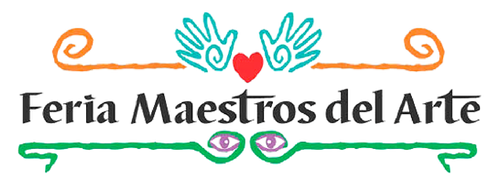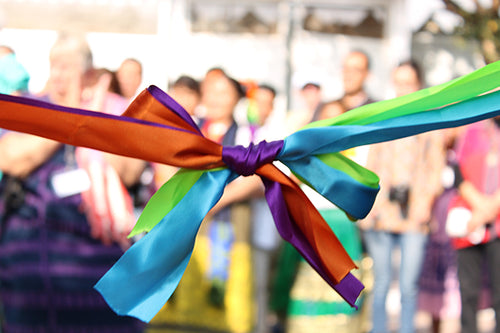
Manuel Ruiz Martínez, Teotitlán del Valle, Oaxaca
The very best of Mexican handicrafts is represented in the fine handwoven carpets and rugs produced in Oaxaca, Mexico. The most important of the Central Valley Oaxacan towns producing excellent handcrafted woven wool products is Teotitlán del Valle. Here, the family employs the same techniques, motifs, and colors used for generations whether they are weaving traditional indigenous designs or contemporary, stylized patterns.
For five generations the Ruiz family has gathered wool, prepared and dyed it, warped their large wooden looms, and woven the family folk art designs into beautiful rugs. The history of weaving in Teotitlán del Valle goes back before the arrival of Hernan Cortes in 1519 and has continued in an unbroken line up to the present. Prior to the Spanish Conquest, the weavers of this area wove cotton cloth to pay tribute to the Aztec rulers of the area.
After the Aztecs surrendered to the Spaniards and their Tlaxcala Indian allies in 1521, new elements were integrated into the lives of the weavers of Teotitlán. The Spaniards introduced the fixed-frame pedal loom to replace the simpler backstrap loom (telar de cintura), and they imported the churro sheep which produce the thick wool still in use today. The Spaniards then began to exact their tribute in the form of wool blankets and serapes, rather than cotton weavings.
Natural dyes are prepared very carefully and laboriously, not only in respect to variety and subtlety of the colors, but also how well the mordant or fixer is mixed in (usually lime juice, sometimes the leaves of bejuco, a tropical tree). Natural dyes have a subtle beauty no chemical dye can match and do not rub off or fade.
Dyes are concocted from a large variety of plant, animal and mineral sources. Among these are lichen, twigs, berries, flowers, pecan bark, walnut husks, huisache seed husks (for black), alfalfa and pirul leaves for green, and guaje husks for reddish brown. Rock moss makes a bright yellow, plant moss a browner yellow, and combined they make many variations. The secrets of mixing these dyes are guarded and handed down from one generation to another. Certain natural dyes have been prized and important trade items since pre-Hispanic times.
The wool is carded by hand, spun into yarn, dyed, and woven into beautiful rugs. Due to the natural differences in the coloring of the various sheep used, undyed wool is also used for a variety of shades and colors.
There are various levels of quality in woven rugs. A good piece will be tightly woven, perhaps 20 threads to the inch; the poorer ones have as few as 10. The denser rugs last longer, keep their shape better whether on the floor or the wall and always look better. If a rug has a cotton warp it will be stronger and have more body, but the all-wool rugs are softer and more valued. Good rugs should have straight edges and lie flat. The dye shouldn’t run when wet.
Teotitlán del Valle, Oaxaca

